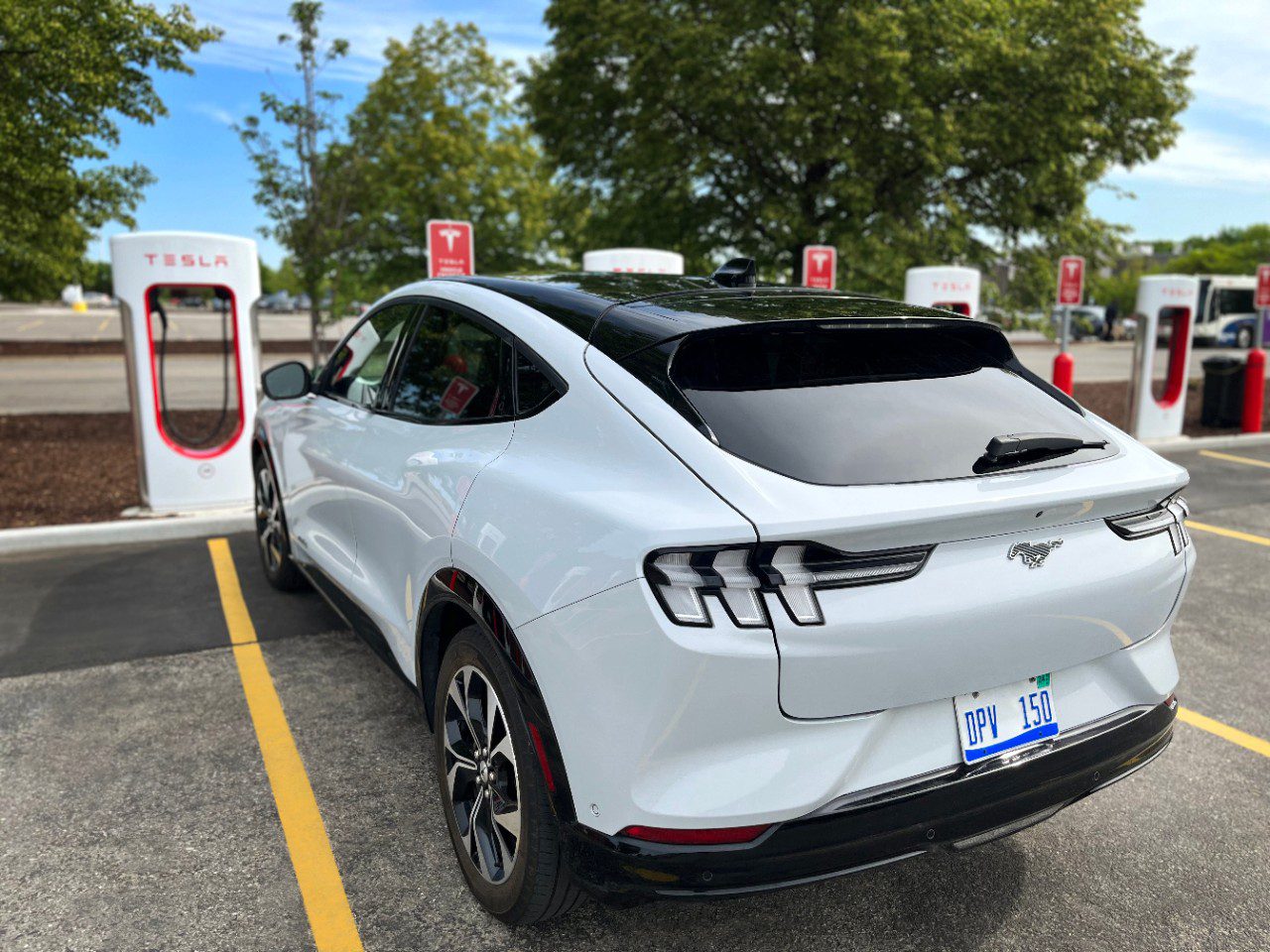Major car producers are switching to Tesla’s charging standards to boost nationwide electric vehicle (EV) ownership. As the federal government pushes for more EV infrastructure and charging corridors, the tricky part is finding charging stations that fit the needs of all-electric cars.
According to Electrek, Tesla’s charging stations are some of the highest-performing and quickest. The Superchargers can return around 170 miles to all Tesla models. Now apply that to Ford, General Motors (GM), Volvo, Mercedes, Volkswagen, and potentially others in the future.
To encourage more EV ownership, charging stations need to follow gas stations: a universal charging cord and adapter.
Setting A Standard
The North American Charging Standard (NACS) began in November 2022 when Tesla opened the standard to the rest of American EVs. It creates a national charging standard with Canada, intending to make the charging corridor more accessible. More vehicles gain access to the most powerful, expansive charging network in the world.
The NACS news coincides with the White House’s requirement for Tesla Superchargers to open access to non-Tesla EVs. An agreement was reached in February as part of the National Electric Vehicle Infrastructure (NEVI) program.
Major Brands Onboard
Mercedes is the most recent addition to the NACS. The German luxury producer announced on July 7 that it will integrate the NACS into its North American EV lineup beginning in 2025. It was the first German carmaker to adopt this policy.
Mercedes drivers will gain access to more than 12,000 Tesla Superchargers across North America starting in 2024. An adapter will be offered to existing EVs for a seamless transition. The news comes in the wake of Mercedes’ plan to add 2,500 of its chargers in the U.S. and Canada.

Photo Courtesy Mercedes-Benz
“To accelerate the shift to electric vehicles, we are dedicated to elevating the entire EV experience for our customers — including fast, convenient, and reliable charging solutions wherever their Mercedes-Benz takes them,” Ola Källenius, chairman of the board of management at Mercedes-Benz Group AG, said in a statement. “That’s why we are committed to building our global Mercedes-Benz High-Power Charging Network, with the first sites opening this year. In parallel, we are also implementing NACS in our vehicles, allowing drivers to access an expansive network of high-quality charging offerings in North America.”
Volkswagen (VW) hasn’t committed to the NACS yet, but CEO Michael Steiner is seriously considering joining the transition. With Mercedes beating them to the punch, VW will likely adopt the plan.
The company’s North American charging partner, Electrify America, will add NACS charging plugs alongside the Combined Charging System (CCS) that fits multiple auto brands in the U.S.
Volvo also said they will be switching to NACS in 2025. The announcement came from their luxury EV brand, Polestar. Current Polestar owners will also receive the adapter in 2024.
“This is a great win for our North American customers!” Thomas Ingenlath, Polestar CEO, said in a press release. “We salute the pioneering work Tesla has done to speed up the adoption and increase the popularity of electric vehicles, and it’s great to see the Supercharger network being made available in this way.”

Photo Courtesy Ford
In North America, Ford and GM have signed up for the NACS. Ford announced their intentions to transition to NACS back in May. In addition to access to 10,000 BlueOval fast-chargers, several of Ford’s EVs will get Tesla Supercharger access. The Mustang Mach-E, F-150 Lightning, and E-Transit drivers will get the adapter to start using the network by 2024.
A new software integration will allow Ford customers to pay for charging with the FordPass app or Ford Pro Intelligence. By 2025, Ford will manufacture vehicles with the NACS connector.
GM’s declaration came back in June. The Detroit-based automaker sees the NACS transition as a way to build upon the Ultium Charge 360 initiative outlined earlier in 2022.
The company plans to integrate the Supercharger network into its vehicle infotainment system and mobile apps for charge-rate monitoring and payment options. GM customers will have access to 134,000 chargers between Tesla’s network, EVGo, the Pilot Company, Ultium, and Electrify America.
Nissan made headlines when it became the first Asian brand to join the NACS. It was announced on July 19. Word on the street is Hyundai is considering joining. CEO Jaehoon Chang told “Reuters” the company’s hesitance is because the Superchargers don’t charge Hyundai EVs as fast as others.
Possible Challenges
The one worry automakers have is opening up their data to Tesla. Tesla chargers send data on their cars’ battery performance, self-driving tech, and charging rate. The company makes software and mechanical updates based on this. According to “Business Insider,” there’s a chance Ford and GM will develop ways to block Tesla from mining data during charging and vice versa.

Photo Courtesy Tesla
“This isn’t about secret technical details. Ford almost certainly knows how a Tesla works; Tesla knows how a Ford works. That’s a simple matter of reverse engineering,” Adam Rogers wrote in an op-ed “Business Insider.” “But add in the size of the potential dataset that flows through charging plugs and how that data changes over time, and you could have something really useful.”
We won’t speculate on that, but it appears that the U.S. and Canada are moving toward a more universal charging network, with more EV ownership on the horizon.





